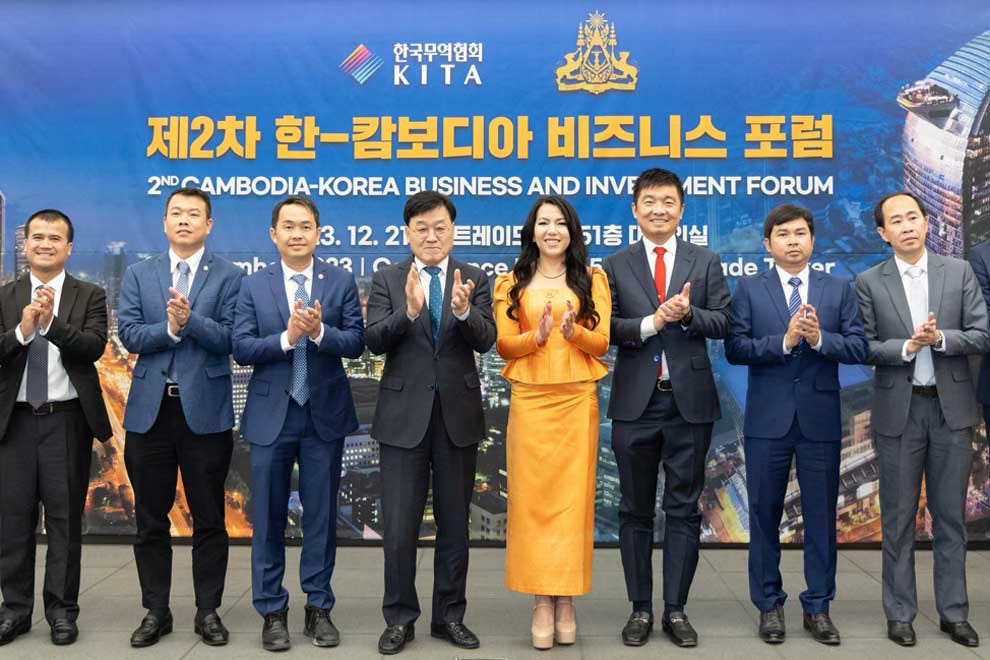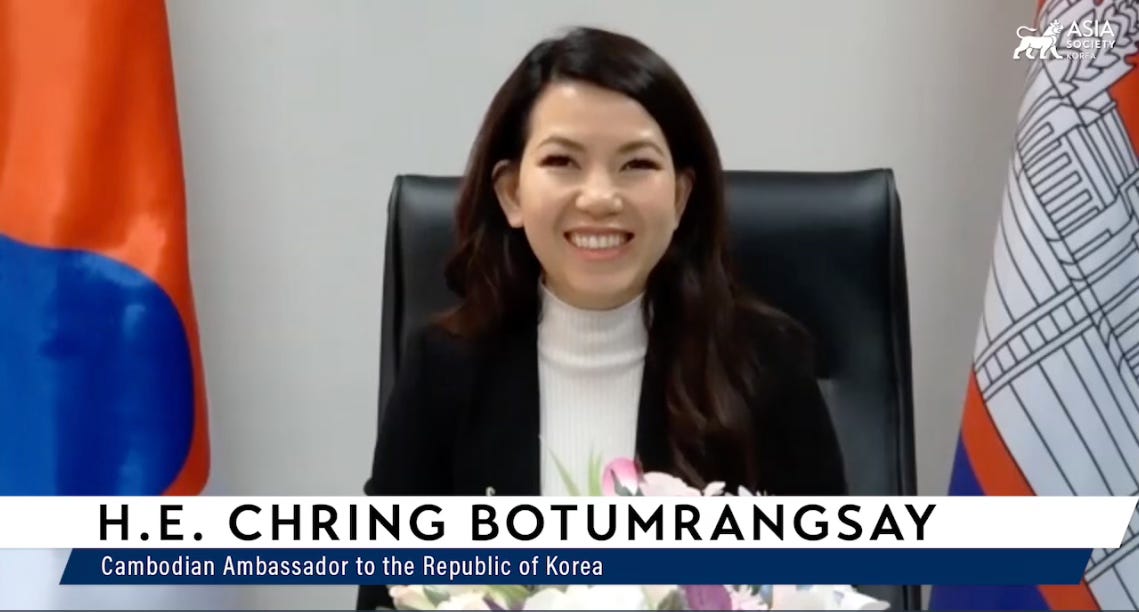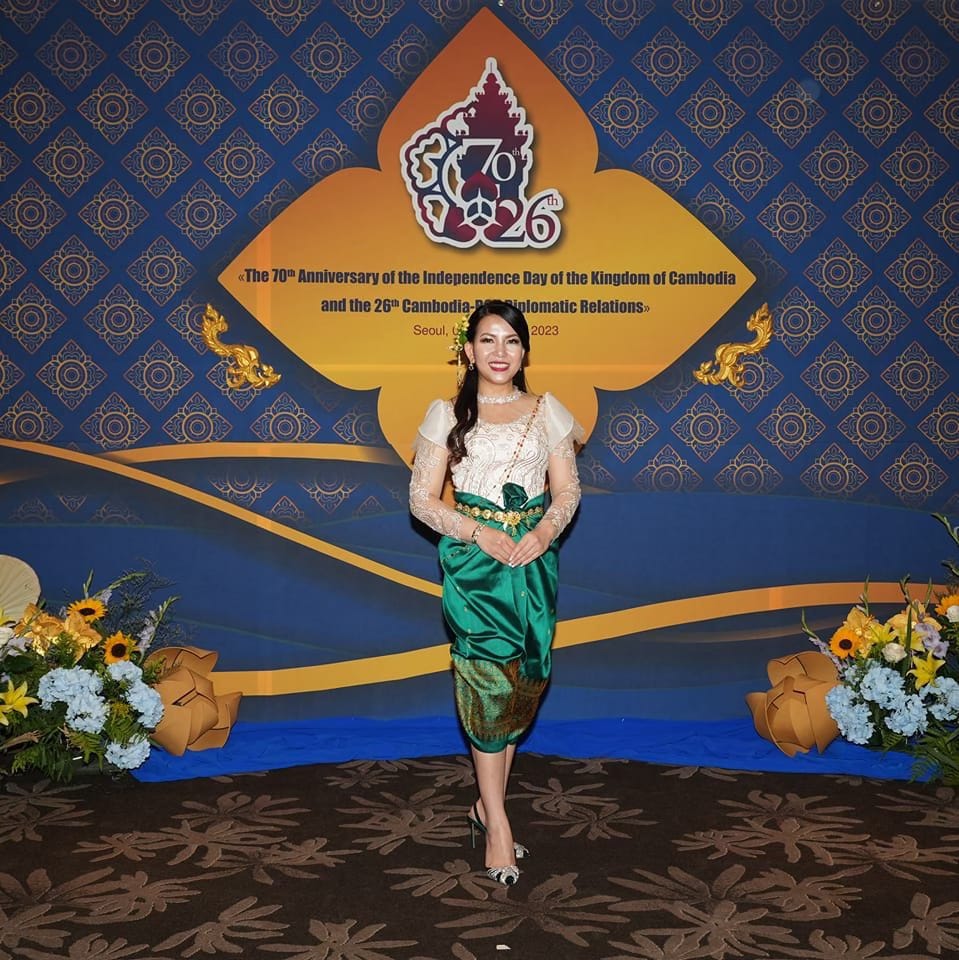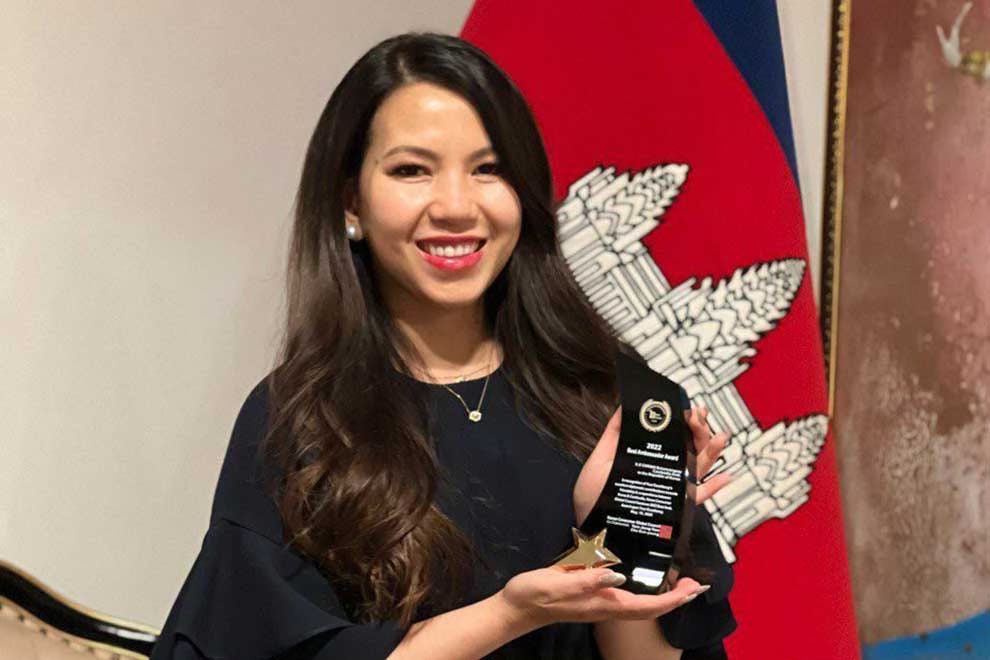Diplomatic Women
Cambodia and the region would benefit from women’s greater involvement in diplomacy and foreign affairs. Chring Botumrangsay broke the glass ceiling.
Cambodian Women in Foreign Policy
By Thong Sariputta
The world has come a long way since women first fought for equal rights in the early 19th century. For Cambodia, the movement for women’s equality began in the 1940s and 1950s, emerging from the country’s nationalist movement. Then came the establishment of the first national women’s organization, the Women’s Friendship Association, in 1958, which aimed at promoting nationalist consciousness.
Now Cambodian women participate in every aspect of society and are given more chances than ever before. However, when it comes to who gets to represent Cambodia on the international stage, within foreign policy institutions, men far outnumber women, particularly in decision-making roles.
The gender gap within the foreign policy establishment is particularly stark in countries, like Cambodia, which have struggled to achieve equal gender representation in all realms of government. In 2021, Cambodia ranked low on the gender equality indexes, as 121st out of 156 countries based on the World Economic Forum Global Gender Gap Report 2021. In terms of political participation, only 21.6 percent of members of parliament and 9.4 percent of ministers were women in 2021 under former Prime Minister Hun Sen’s administration. In 2023, following the 7th National Assembly Election, the number dropped to only 16 women, equivalent to 12.8 percent of parliament members being women.
Cambodia’s Ministry of Foreign Affairs had 288 female staff members in 2023, equivalent to 38.65 percent of the total staff. Despite such numbers, men occupy the majority of the senior roles. Only seven women hold undersecretary and secretary of state positions, out of 34 positions, and there are also only five female ambassadors out of the 33 posted to Cambodian missions abroad.
In other Southeast Asian countries, the data has shown similarly slow progress towards equity in these spaces. In Thailand, only 15.7 percent of the representatives in the national parliament and 23.9 percent of high-ranking civil servants are women. In 2022, out of 54 Thai ambassadors of foreign missions, only 17 were women. For Singapore, of 48 ambassadors, 13 are women; in Malaysia out of 81 ambassadors, 12 are women; in Indonesia out of 91 ambassadors, 10 are women; and in the Philippines, out of 60 ambassadors, 17 are women. Such numbers showcase that women remain underrepresented in high-level foreign policy positions across the region.
This poses a question: are we truly achieving the best foreign policy outcomes? The absence of women’s voices in the foreign policy arena not only perpetuates gender inequality, but also risks overlooking critical issues and hinders the potential for inclusive global solutions.
Reasons Behind Lack of Female Participants in Foreign Diplomacy
Foreign affairs has traditionally been a sector where women have been excluded or poorly represented, and that is no different in Cambodia.
The first reason stems from Cambodia’s historical context, which has shaped women’s roles in society. Three decades of violence and civil wars left Cambodia with a surplus of women of marriageable age during the 1980s and 1990s. Coupled with conservative cultural norms that women should prioritize marriage over higher education and careers, women without husbands were looked down on and marginalized. Thus, women had no choice but to marry and were reduced to doing household chores rather than being sent to school for higher education or leaving the home for employment. This led to a decline in women’s status in the family and representation in high-status careers.
According to a 2004 Cambodia Gender Assessment by the Asian Development Bank, in 1993, there were no female ministers, secretaries of state, or provincial governors. Following the 1998 national elections, there were two female ministers (out of 27 ministers) and three secretaries of state (out of 54).
Secondly, gender inequality is deeply embedded within Cambodian cultural and traditional norms, which deem women to be inferior to men. It is socially expected that women should carry out less technical jobs/positions and are not capable enough for high ministerial jobs or for being posted overseas.
“Talents are often doubted, ignored, and underestimated just because we are women. We have to fight against this conception,” Pech Puthisathbopeaneaky, Cambodia’s general consul to Hong Kong, told VOD English in 2022.
Such stereotypes and misconceptions regarding the value of women’s participation in high-ranking positions, especially in the realm of foreign policy, can discourage women from entering these competitive fields.
Why Gender Equity in Diplomacy Works
However, when women are included in high-level international affairs – from peace negotiations to international security-related processes – the data shows that they have contributed to overwhelmingly positive results. According to a study by the Council on Foreign Relations, women’s engagement in a peace negotiation makes the agreement 64 percent less likely to fail. Another study by the International Peace Institute found that when women are included in the negotiation process, a peace agreement is 20 percent more likely to last two years and it is 35 percent more likely to last 15 years. Another study also found that a state, under a system that empowers women, is five times less likely to resort to the use of force in an international crisis. When women are in a position to influence decision-making, peace is more likely. Women in these positions are flexible, analytical, great communicators and negotiators, and capable of promoting dialogue and trust. This can be attributed somewhat to the different ways in which men and women are socialized.
In addition, many of the topics or experiences that might be influenced by foreign policy work in Cambodia are gendered experiences, and therefore would benefit from being viewed through a feminist lens. Take labor migration, as one example. Women are likely to migrate for different reasons than men, and are more likely to migrate for reasons beyond their control. Women migrant workers are also exposed to different risks than their male counterparts. A foreign policy apparatus that mainstreams gender concerns is more likely to draft or push for gender-sensitive policies for the protection of migrant workers.
Likewise, for sectors that contribute to Cambodia’s foreign exports, which predominantly employ women, such as the garment and textile industries, more gender-balanced policies would help include their voices within high-level trade negotiations. The multibillion-dollar garment industry has contributed significantly to Cambodia’s economy, and women on the ground are likely to be impacted by the decisions made in high-level trade agreements. Having more women within trade negotiation processes would ensure that gender issues are mainstreamed within the trade agreement context and that these marginalized women’s interests are represented and better protected.
The Way Forward
Cambodia, like every other country, would benefit from more gender equity and women’s representation in its foreign policy processes. In terms of on-the-ground interventions, more information about international studies and diplomacy-related careers should be disseminated to Cambodia’s students. It is important for girls and women to initially be well aware of the relevant study courses, promote their interest in the field, and ensure that foreign affairs is not just “a man’s job.”
As of 2021, data from the Ministry of Education showed that only 9 percent of Cambodian students enrolled in a Social Sciences bachelor’s degree, the only degree that allows students to major in international relations. The majority of Cambodian students chose to pursue business majors. It is therefore essential for students to first be more aware of the field.
In addition, it is also crucial for women to be entitled to the same opportunities within foreign affairs institutions. Women should be included in every aspect of the foreign policy process ranging from planning, drafting, negotiating, concluding, and implementing. Gender-mainstreaming new policies would ensure that women are more proportionately represented.
By promoting gender equality in foreign policy, we are not only creating a more just world where everyone has a voice in shaping their future, but also guaranteeing that those whose voices are marginalized can be heard. It will also pave the way for young women to look up to capable female role models, envision themselves in similar roles and feel empowered to pursue their dreams.
We should be encouraging a pipeline of female leaders to push for progress and change while in the meantime setting the stage for a more diverse and equitable future in both the national and international arenas.







